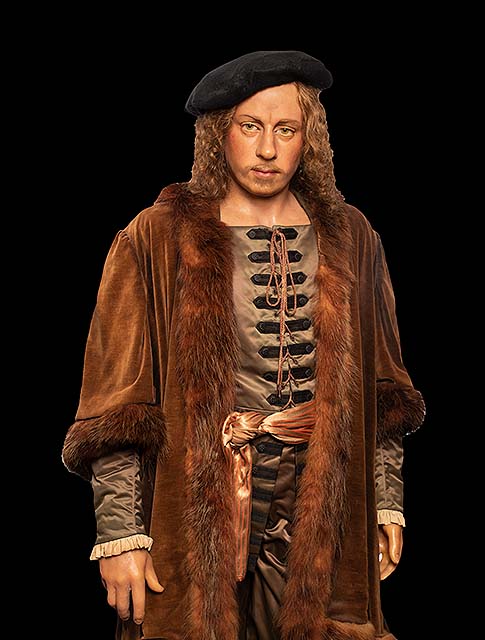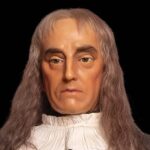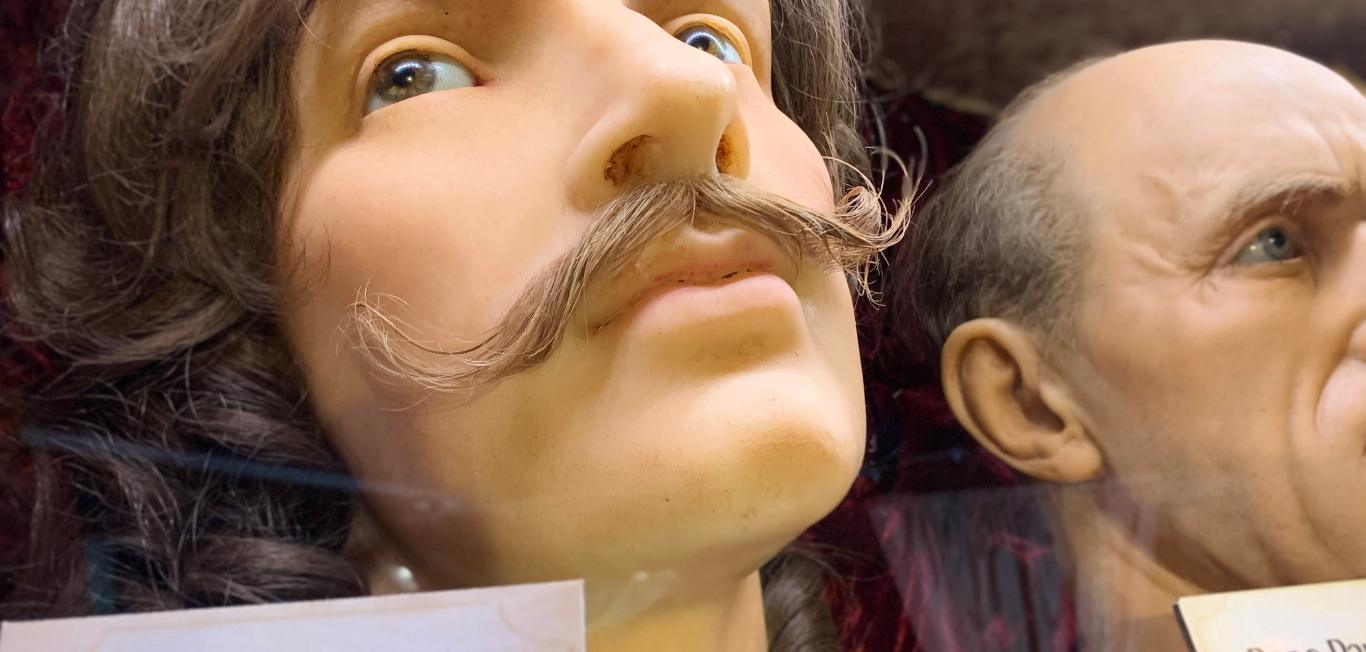History of Rembrandt
Rembrandt Harmenszoon van Rijn is one of the most renowned and celebrated artists and painters from the Dutch Golden Age, a period in which Dutch science, trade, and art were most acclaimed globally. Born in Leiden, Netherlands on July 15, 1606, Rembrandt is widely considered the greatest artist in European art history due to his masterful use of light and shadow in his paintings, including his exceptional ability to capture emotion and movement in his portraits. Rembrandt is also celebrated as an influential teacher to many aspiring artists during his time and for centuries since his demise. Rembrandt’s artworks have been widely praised for their ability to capture the human spirit, as well as their skillful use of color, composition, and brushwork. To date, Rembrandt’s artworks are still iconic and are beloved worldwide.
Early Life
Rembrandt was the ninth child of ten born to Harmen Gerritszoon van Rijn and Neeltgen Willemsdochter van Zuytbrouck. Fortunately, Rembrandt was born to a well-off family, with his mother being a baker’s daughter, while his father worked as a miller. In his early school years, Rembrandt attended a Latin school where he began developing a strong interest in art. This prompted his father to support his enrollment at the University of Leiden for his higher education despite Rembrandt being only 14 years of age.
Enrolling in higher education at such a young age was unusual for a miller’s son, and this became clear after he struggled with the pressure of university life. After attending university for a few months, Rembrandt dropped out to begin an apprenticeship as a painter.
Due to his inclination toward painting, his parents enrolled him in an apprenticeship program that was overseen by a Leiden history painter, Jacob van Swanenburgh. Rembrandt spent three years apprenticing with van Swanenburgh. He enrolled for another apprenticeship of six months with Pieter Lastman, a famous painter in Amsterdam.
DID YOU KNOW?
After attending university for a few months, Rembrandt dropped out to begin an apprenticeship as a painter.
Interesting Facts and Personal Life
Rembrandt is widely considered the greatest painter in European art, having elicited accolades from experts and onlookers. Rembrandt’s artworks continue to send ripples throughout the painting industry, as they are devoid of ambiguity and error.
An interesting fact about Rembrandt’s personal life is that his first three children did not survive into adulthood, as they failed to live beyond three months, with only his fourth son living to adulthood.
Regarding Rembrandt’s artworks, his portrait works during the Dutch Golden Age dominated Europe. Rembrandt was able to successfully ward off rivalry from other renowned artists throughout Europe. His global dominance as a painter was interesting because, unlike other artists who had to travel to other countries, particularly Italy, Rembrandt never left his homeland, the Netherlands, his entire life. Rembrandt did not follow the advice given to other young painters that they had to travel to Italy to study Italian art firsthand. Instead, he was convinced that he did not need to travel and could learn Italian art in his Dutch homeland.
Around 1631, Rembrandt moved to Amsterdam, which at the time had the most successful port in northern Europe and attracted all sorts of merchants from every country in the world. These distinct features gave young artists such as Rembrandt more opportunities, compared to Leiden, to explore their art. While in Amsterdam, Rembrandt rented a house belonging to art dealer Hendrick van Uylenburgh. While renting the house, Rembrandt met Saskia, his landlord’s young cousin. They began courting, and in 1634, they got married. Rembrandt’s numerous drawings and paintings of his wife indicate they were happily married. Unfortunately, Rembrandt and his wife lost their first three children, with their son, Rumbartus, born in 1636, dying two weeks after birth. His wife bore two more children over the next four years, but they all died before reaching three months. In 1641, they had their fourth child, Titus, who managed to survive to adulthood. Despite their child’s survival, Rembrandt’s wife fell ill after birth, and he constantly made drawings of her in bed looking tired. Unfortunately, Saskia’s illness became worse, prompting her to write a will in 1642 that left all her fortune to Rembrandt and Titus. Nevertheless, the will stated that Rembrandt would lose the fortune if he remarried. Eventually, Saskia died after a short while from a plague or tuberculosis when she was only 30 years old.
In terms of his finances, Rembrandt faced major financial struggles, particularly in the 1650s, when Amsterdam faced a major economic depression. When the financial crisis occurred, he had not completed half of his mortgage payments, and creditors began to make constant demands for payment. This forced Rembrandt to apply for “cession bonorum” in July 1656, a form of bankruptcy filing that would help him avoid imprisonment. Due to his financial struggles, Rembrandt moved to a poorer district in the Netherlands where he continued to paint.
Career as a Painter
Rembrandt’s career as a painter began in his hometown of Leiden. After completing two apprenticeships with famous local painters, he, alongside friend and colleague Jan Lievens, opened a studio in 1625 in Leiden. By 1627, his studio began accepting art students such as Gerrit Dou. In 1629, Rembrandt’s artwork was recognized by a famous Dutch physicist, mathematician, and statesman, Constantijin Huygens. He procured, at the Hague Court, key commissions for Rembrandt that allowed him to sell paintings to the institution until 1646.
DID YOU KNOW?
Rembrandt’s art was recognized by famous Dutch statesman Constantijin Huygens.
After studying with prominent local painters, he moved to Amsterdam in 1631, establishing a successful studio and rapidly gaining a reputation as a leading artist. In Amsterdam, Rembrandt created various works ranging from small etchings and drawings to large-scale history paintings and portraits. His most celebrated works were his self-portraits, which accurately captured his physical and emotional state. According to Kabiru (1990), Rembrandt was a brilliant exponent of Dutch Realism and a supreme portraitist who influenced major strains of Baroque painting. Rembrandt’s self-portraits showcased his prowess in depicting the human character, as most of the portraits exemplified his contemporary life in Amsterdam. Also, Rembrandt’s artwork reflected the devout spirit of Calvinist Holland, restrained emotions, and new Protestant Reformation art.
Rembrandt’s artistic style changed throughout his career from a more traditional approach to a more experimental one. Rembrandt was widely regarded as an expert in most painting genres, including history, landscape, portraiture, and genre painting. He is famous for his printmaking and Biblical art, as the paintings illustrated Dutch Baroque art’s dark manner, which is characterized by rich color, luxuriant brushwork, and a mastery of chiaroscuro, which exhibits a treatment of shade and light. Rembrandt’s self-portraits, as well as his portraiture, depict his everyday life with an intensity and realism rarely seen in his time. He is also renowned for his landscape and religious paintings, which often feature strong contrasts of light and dark, as well as his use of dramatic chiaroscuro.
Impact and Influence in History
Rembrandt’s artwork majorly influenced the art of the 17th century, particularly portraiture and genre painting. He was a master of realism, portraying his subjects in a realistic and naturalistic manner with attention to detail. His paintings were admired for their emotion and mood, and he was known for his use of light and shadow to create a sense of depth in his paintings. Throughout history, Rembrandt’s work has immensely impacted the art world and has influenced artists and painters. His technique of painting in light and shadow was revolutionary and continues to inspire artists today. In addition, Rembrandt’s artwork was popular among both the upper and lower classes. His work was so influential that it inspired many other painters, including Johannes Vermeer and Jan Steen.
Late in Life
In the last 20 years of Rembrandt’s life, he used himself as a model and painted self-portraits more frequently. Also, during the final years of his life, Rembrandt continued to face money problems to the point that he was forced to sell his wife’s tomb. He used the money to make an offer for a Holbein that was being sold. When Rembrandt’s close friend (Hendrickje Stoffels) died in 1663 after a long illness, Titus came to look after his father. While staying with his father, Titus married the daughter of an old family friend in 1668. Unfortunately, Titus died seven months later, but his daughter was born six months later. Rembrandt was left alone, and he died in 1669 and was buried next to Titus and Hendrickje at Westerkerk in Amsterdam.
Historical reports indicate that Rembrandt died poor and misunderstood. By the end of his life, he had become unfashionable in the Netherlands, and his realism had been replaced by classicism. Nevertheless, his global reputation among collectors and connoisseurs continues to rise, with many artists continuing to adopt his artistic style.
DID YOU KNOW?
Rembrandt's realism was eventually replaced by classicism.
FAQs
What is Rembrandt famous for?
Rembrandt is famous for his masterful use of light and shadow in his works, which helped to create a captivating and unique painting style. His artistic reputation and uniqueness rest on his profound humanity, particularly in Rembrandt’s self-portraits and portraiture, which remain unequaled. He is also famous for religious and mythological works that capture the psychological complexities of his subjects.
Is Rembrandt the greatest painter of all time?
Rembrandt ranks as one of the greatest painters of all time due to his mastery of many art genres. His masterful use of light and shadow to create an atmosphere of drama or intimacy remains one of the most rare and unique artistic styles to date, and many painters throughout history have not been able to replicate that style. Also, Rembrandt is considered the greatest of all time for using the chiaroscuro style in his portraits, as the technique helped to bring out the features of his subjects and created a sense of texture and depth.
What were two major works of art Rembrandt created?
One of Rembrandt’s major works is “The Night Watch.” Painted in 1642, this iconic painting depicts a group of officers of the Amsterdam civic guard in a scene of military preparedness. Rembrandt used the Baroque style to draw the painting, as the style was very popular at the time. The painting features various textures, colors, and lighting effects, and the figures are presented in a dynamic composition. Another famous painting is “The Return of the Prodigal Son.” Painted in 1669, the painting depicts a family reunion between the prodigal son and his father, with the father embracing his son and the son kneeling before him in repentance. The painting is composed so that a spotlight illuminates its two main characters. This spotlight effectively draws attention to their emotional connection and the father’s generous and unconditional love.
Who owns Rembrandt’s paintings?
A Rembrandt painting is a valuable work of art. As such, the issue of ownership is often tied to the artist’s legal rights and the painting’s rightful ownership. Under copyright law, the artist retains the right to control their artwork’s reproduction, distribution, and display. This means the artist has the right to decide who can and cannot reproduce or display their artwork, including their paintings. In the case of a Rembrandt painting, this means that the artist’s legal heirs have the right to control the reproduction and display of his paintings.










